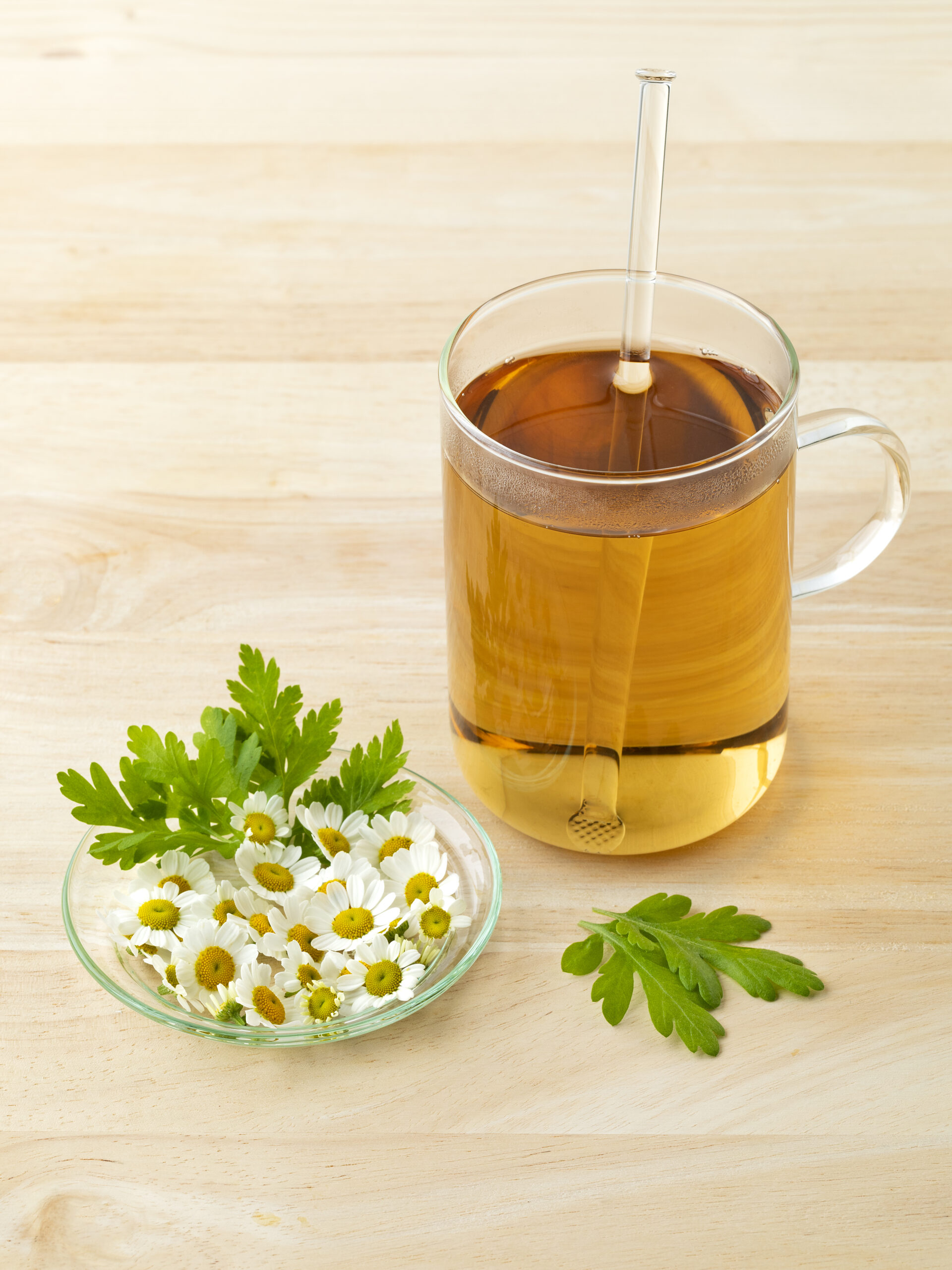Feverfew (Chrisanthemum parthenium) is a herb traditionally used to treat fevers and respiratory infections, cleanse the kidneys and stimulate menstruation. In the 1980s, feverfew gained popularity as a remedy for migraines. Currently, there is growing research investigating a holistic approach to migraine treatment (Vikelis et al., 2020). Feverfew has been shown to be a valuable aid in lessening the severity and frequency of migraines in migraine sufferers, though the herb is not effective if used after the onset of a migraine.
Complementary alternative medicine and therapies used in the treatment and management of migraines include yoga, deep breathing exercises and meditation (Rodriguez, 2020). Mindfulness techniques have been used together with feverfew and have been shown to help reduce the pain and the length of migraines in sufferers. There is some evidence that combination therapy has the potential to positively manage migraines, with the bonus of causing fewer side effects than conventional drug therapy. Unfortunately, there is only a limited number of small studies available at this time (Yamanaka et al., 2021). The drawback to alternative treatments is that migraine sufferers do not often report to their doctors that they are using such treatments. Many migraine sufferers will seek out alternatives on their own for relief. Thus, doctors and researchers have limited data that could aid in establishing more effective and useful treatments for migraines.
Feverfew can be safely used in conjunction with conventional drugs to treat migraines, as no evidence of serious or severe drug interactions has been reported (http://Rxlist.com). It should not be used in conjunction with NSAIDs (Winchester Hospital). According to Bone & Mills, migraine sufferers can take a low daily dose of feverfew, but they will need to take it for 6 to 9 months before being able to achieve prophylactic effect. Alternatively, a higher dose can be taken initially and combined with other herbs and nutriceuticals (CoQ10, magnesium, andrograhis, B12). The dose can be reduced once a prophylactic effect is in place.
References:
Bone, K., & Mills, S. (2013). Principles and practice of phytotherapy: Modern herbal medicine (2nd ed.). London, England: Churchill Livingstone
Feverfew | Complementary and Alternative Medicine | St. Luke’s Hospital. (2015, March 27). Stlukes-Stl.Com. https://www.stlukes-stl.com/health-content/medicine/33/000243.htm
Feverfew: Side Effects, Dosages, Treatment, Interactions, Warnings. (2017, September 6). RxList. https://www.rxlist.com/consumer_feverfew/drugs-condition.htm
Feverfew | Winchester Hospital. (n.d.). Www.winchesterhospital.org. Retrieved April 29, 2021, from https://www.winchesterhospital.org/health-library/article?id=21713
Rodriguez, T. (2020, October 19). Complementary and Integrative Treatments for Migraine: An Expert Interview. Neurology Advisor. https://www.neurologyadvisor.com/topics/migraine-and-headache/complementary-and-integrative-treatments-for-migraine-expert-interview/
Yamanaka, G., Kanou, K., Takamatsu, T., Takeshita, M., Morichi, S., Suzuki, S., Ishida, Y., Watanabe, Y., Go, S., Oana, S., & Kawashima, H. (2021). Complementary and Integrative Medicines as Prophylactic Agents for Pediatric Migraine: A Narrative Literature Review. Journal of clinical medicine, 10(1), 138. https://doi.org/10.3390/jcm10010138
Vikelis, M., Dermitzakis, E. V., Vlachos, G. S., Soldatos, P., Spingos, K. C., Litsardopoulos, P., Kararizou, E., & Argyriou, A. A. (2020). Open Label Prospective Experience of Supplementation with a Fixed Combination of Magnesium, Vitamin B2, Feverfew, Andrographis Paniculata and Coenzyme Q10 for Episodic Migraine Prophylaxis. Journal of clinical medicine, 10(1), 67. https://doi.org/10.3390/jcm10010067

